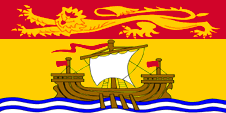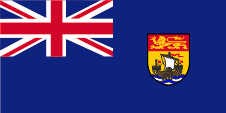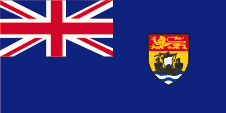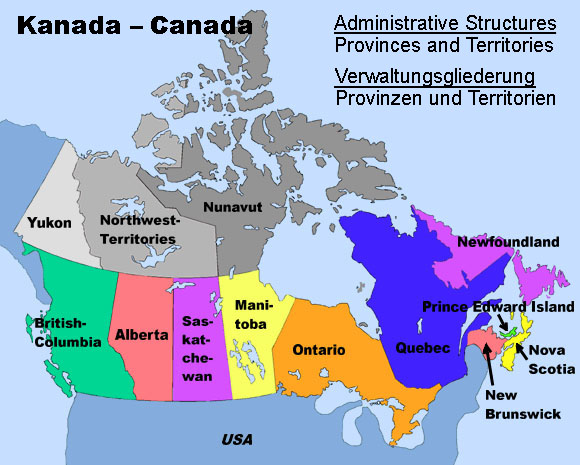Neubraunschweig |
|
|
|
| Übersicht – Contents: | |
Neubraunschweig |
|
|
|
| Übersicht – Contents: | |
Flagge – Flag: |
|
 |
Provinzflagge – flag of the province, Seitenverhältnis – ratio = 1:2, Quelle/Source: Corel Draw 4   |
historische Flaggen – historical Flags: |
|
 |
1868–1950, Flagge der Regierung (Staatsflagge) – flag of the government (state flag), Seitenverhältnis – ratio = 1:2, Quelle/Source, nach/by: World Statesmen |
 |
1950–1965, Flagge der Regierung (Staatsflagge) – flag of the government (state flag), Seitenverhältnis – ratio = 1:2, Quelle/Source, nach/by: World Statesmen, Wikipedia (D) |
Bedeutung/Ursprung der Flagge – Meaning/Origin of the Flag: |
|
| Die Flagge von Neubraunschweig wurde am 24.02.1965 angenommen. Es ist eine Wappenflagge, denn sie zeigt das Design des Wappens der Provinz. | The flag of New Brunswick was adopet on 24th of February in 1965. It is a scutcheon flag, because it shows the design of the coat of arms of the province. |
| Bis 1922 hätte von den Dienststellen der Provinzen offiziell der britische Union Jack, die sogenannte Royal Union Flag, verwendet werden müssen, oder aber (ab 1922 im Prinzip nur noch) die kanadische blaue Dienstflagge, der typische Britische Blue Ensign, mit dem Wappenschild Kanadas im wehenden Ende. Dennoch hatten die Provinzbehörden eigene Siegel und später auch Wappen, die eigenmächtig im wehenden Ende auf der blauen Dienstflagge platziert wurden, so in Neubraunschweig ab 1868. Für dieses Verfahren hätte eine Genehmigung der britischen Behörden vorliegen müssen, was jedoch nicht der Fall war, aber toleriert wurde. |
Until the year 1922 there had officially been used, the British Union Jack, the so-called
Royal Union Flag, by the departments of the provinces, or (from 1922 nearly only) the Canadian
blue official flag, the typical British Blue Ensign, with the coat of arms of
Canada in the flying end. Nevertheless, the provincial authorities had their own seals and later also coats of arms, which were unauthorized placed in the flying end of the blue official flag, in this way in New Brunswick from 1868. A permit should have been approved by the British authorities for this procedure, this was not the case, but was tolerated. |
| Das Wappen in dieser Flagge wurde 1950 modifiziert, die Form des Schildes änderte sich ein wenig und das Schiff fährt in die andere Richtung. | The
coat of arms in this flag had been modified in 1950 a little bit.
The shape of the shield changed and the ship goes the other direction. |
| Privatpersonen hatten den Union Jack zu verwenden und ab 1892 den sog. Red Ensign, die rote Version der kanadischen Flagge mit dem Union Jack in der Oberecke und dem Wappen Kanadas im wehenden Ende. | Private individuals had to use the Union Jack and from 1892 the so-called Red Ensign, the red version of the Canadian flag with the Union Jack in the upper corner and the coat of arms of Canada in the flying end. |
| Im Zuge der allmählichen Trennung Kanadas von Großbritannien verlor der Blue Ensign als amtliches, britisches Kennzeichen seine Bedeutung und man ersetzte ihn durch neue Provinzflaggen, die von Behörden und Dienststellen der Provinzen und auch von Privatpersonen verwendet werden dürfen. So führte Neubraunschweig 1965 die heutige Flagge ein. Dazu wurde das Bild des Wappens auf die gesamte Fläche der Flagge übertragen. Ein Verfahren, das auch bei Änderung der Provinzflaggen von Britisch-Kolumbien, Prinz-Eduard-Insel und Neuschottland angewendet worden ist. Die Flagge der Provinz folgt aus der Historie heraus britischen Vorgaben. Es gelten: Blau = Pantone 280, Rot = Pantone 186, Gelb = Pantone 116. | In
the course of the gradual separation of Canada from the United
Kingdom the Blue Ensign as an official British flag lost its
meaning and became replaced by new provincial flags, which may
be used by authorities and departments of the provinces and also
by private individuals. In this way, New Brunswick introduced the current flag in 1965. For this purpose, the image of the coat of arms was transferred to the entire surface of the flag. A procedure that was also used to change the provincial flags of British Columbia, Prince Edward Island and Nova Scotia. The flag of the province follows British specifications due to history. They are: Blue = Pantone 280, Red = Pantone 186, Yellow = Pantone 116. |
| Vor 1965 musste von staatlichen Dienststellen offiziell die kanadische Dienstflagge (Blue Ensign) verwendet werden. Inoffiziell wurde aber ab 1868 ein eigener Blue Ensign – die britische Dienstflagge mit dem Wappenschild im wehenden Ende – verwendet. Inoffiziell heißt hier, dass diese Flagge nie von britischen Behörden genehmigt worden war. | Before
1965, the Canadian state flag (Blue Ensign) officially had to be
used by state offices. Unofficially, however, an own Blue
Ensign – the British state flag with the coat of arms in the flying
end – was used from 1868. Unofficially means here that this flag had never been approved by British authorities. |
| Quelle/Source: Volker Preuß, Flaggen Enzyklopädie, World Statesmen | |
Wappen – Coat of Arms: |
|
 |
Wappenschild von Neubraunschweig – escutcheon of New Brunswick, Quelle/Source: Corel Draw 4 |
Bedeutung/Ursprung des Wappens – Meaning/Origin of the Coat of Arms: |
|
| Es gibt ein reguläres Wappen für Neubraunschweig, mit Postament, Schildhaltern, einer Wappenkrone und dem Motto. Hier dargestellt ist nur der zentrale Teil des Wappens, der Wappenschild. | There is a regular coat of arms for New Brunswick, with a console, shield holders (supporters), withe a crest and the motto. Here is only depicted the central part of the coat of arms, the escutcheon. |
| Das Wappenschild von Neubraunschweig zeigt im oberen Teil einen goldenen britischen Löwen auf rotem Grund, ein Hinweis an die Verbindungen zu Großbritannien. Darunter ein Schiff auf den Meereswellen des Atlantik, offensichtlich ein Hinweis auf die europäische Besiedlung. | The
escutcheon of New Brunswick shows in the upper part a golden British lion on red
ground, a hint for the connexions to United Kingdom. Underneath a ship on ocean's waves of the Atlantic, obvious a indication for the European settlement. |
| Quelle/Source: Volker Preuß, Wikipedia (EN) | |
Landkarte – Map: |
 |
| Landkarte/Map: Volker Preuß |
Zahlen und Fakten – Numbers and Facts: |
|
|
|
|
|
|
|
|
|
|
|
|
|
|
|
Geschichte: |
| 1534 ·
der Franzose Jacques Cartier entdeckt und erforscht die Küste des heutigen
Neubraunschweig (Miramichi-Bucht) 1604 · Kolonisierungsexpedition des Samuel de Champlain in der Gegend der heutigen Stadt Saint John, er nimmt das Land für Frankreich in Besitz 1608 · Zusammenfassung aller französischen Besitzungen im heutigen Kanada als "Neufrankreich" 1663 · Neufrankreich wird französische Kronkolonie 1713 · Friede von Utrecht, Frankreich muss das heutige Neubraunschweig, Neuschottland und die Insel Neufundland an Großbritannien abtreten 1776 · englische Siedler fliehen vor den anti-britischen Unruhen in Neuengland in das heutige Neubraunschweig, Abwehr von Angriffen aus Neuengland 1768 · Gründung der Stadt Fredericton, benannt nach dem zweiten Sohn von König Georg III. von England 1783 · tausende loyale englische Siedler fliehen aus den USA in das heutige Neubraunschweig 1784 · Neubraunschweig wird eine eigene Provinz durch Abtrennung von der Provinz Neuschottland, der Name Neubraunschweig hat seinen Ursprung in dem deutschen Kurfürstentum Braunschweig-Lüneburg, über das damals der englische König Georg III. (aus dem deutschen Hause Hannover) regierte 1785 · Fredericton wird Provinzhauptstadt 1867 · Gründung der Konföderation Kanada (Dominion of Canada – mit einem eigenen Parlament) auf Grund von Autonomieforderungen, Konföderation durch die vier Gründungsprovinzen Neubraunschweig, Québec, Ontario und Neuschottland |
History: |
| 1534 ·
the Frenchman Jacques Cartier discovers and explores the coast of the
today's New Brunswick (Miramichi Bay) 1604 · expedition of colonization by Samuel de Champlain in the region of the today's City Saint John, he appropriates the land for France 1608 · summary of all French possessions in the today's Canada as "New France" 1663 · New France becomes a French crown colony 1713 · Peace of Utrecht, France has to cede the today's New Brunswick, Nova Scotia and the Island of Newfoundland to United Kingdom 1776 · because of anti-British riotings escape English settlers from New England into the today's New Brunswick, defence of attacks from New England 1768 · foundation of the city Fredericton, named after the second son of King George III. of England 1783 · thousands of loyal English settlers escape from the USA into the today's New Brunswick 1784 · New Brunswick becomes an own province by separation from the Province of Nova Scotia, the name New Brunswick has its origin in the German Electorate of Brunswick-Lueneburg (Braunschweig-Lüneburg) over that at that time ruled the English King George III. (from the German House of Hanover) 1785 · Fredericton becomes capital of the province 1867 · establishment of the Confederation of Canada (Dominion of Canada – with an own parliament) because of demands for autonomy, confederation of the four founding provinces New Brunswick, Québec, Ontarioand Nova Scotia |
| Quelle/Source: Atlas zur Geschichte, World Statesmen, Wikipedia (D), Discovery '97 |
Ursprung des Landesnamens – Origin of the Country's Name: |
|
| Neubraunschweig, das 1784 gegründet wurde, hat seinen namentlichen Ursprung in dem deutschen Kurfürstentum Braunschweig-Lüneburg. Dessen Kurfürst aus dem deutschen Hause Hannover war zu dieser Zeit als Georg III. englischer König. |
The name of New Brunswick, which was founded in 1784, originates in the German
Electorate of Brunswick-Lueneburg. Its elector, from the German Dynasty of Hanover, wast the time the English king as George III. |
| Quelle/Source: Volker Preuß | |